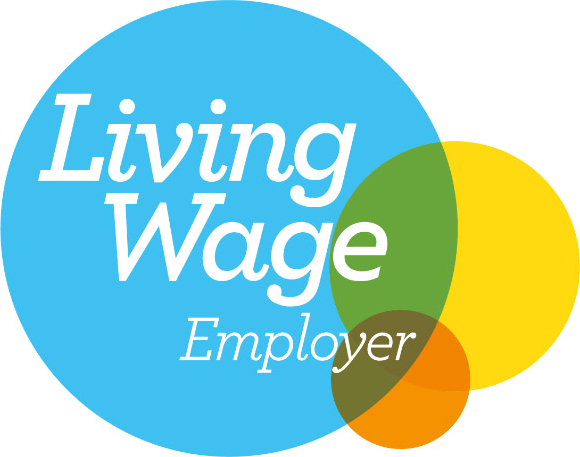Criticism of the National Health Service (England)
페이지 정보
작성자 Minna 댓글 0건 조회 107회 작성일 25-07-04 23:10본문
Criticism of the National Health Service (England) includes concerns such as access, waiting lists, healthcare protection, and various scandals. The National Health Service (NHS) is the openly funded healthcare system of England, produced under the National Health Service Act 1946 by the post-war Labour government of Clement Attlee. It has come under much criticism, specifically throughout the early 2000s, due to outbreaks of antibiotic resistant infections such as MRSA and Clostridioides difficile infection, waiting lists, and medical scandals such as the Alder Hey organs scandal. However, the involvement of the NHS in scandals extends back lots of years, consisting of over the provision of psychological health care in the 1970s and 1980s (ultimately part of the reason for the Mental Health Act 1983), and spends beyond your means on medical facility newbuilds, including Guy's Hospital Phase III in London in 1985, the expense of which soared from ₤ 29 million to ₤ 152 million. [1]
Access controls and waiting lists
In making health care a mostly "unnoticeable expense" to the patient, health care appears to be efficiently complimentary to its consumers - there is no particular NHS tax or levy. To decrease costs and ensure that everyone is dealt with equitably, there are a variety of "gatekeepers." The family doctor (GP) operates as a primary gatekeeper - without a referral from a GP, it is typically impossible to gain greater courses of treatment, such as a consultation with a specialist. These are argued to be needed - Welshman Bevan kept in mind in a 1948 speech in your home of Commons, "we will never ever have all we require ... expectations will constantly go beyond capacity". [2] On the other hand, the nationwide medical insurance systems in other nations (e.g. Germany) have done without the requirement for recommendation; direct access to an expert is possible there. [3]
There has been concern about opportunistic "health tourists" travelling to Britain (primarily London) and using the NHS while paying absolutely nothing. [4] British people have actually been understood to travel to other European countries to make the most of lower costs, and because of a worry of hospital-acquired super bugs and long waiting lists. [5]
NHS access is for that reason managed by medical top priority instead of cost mechanism, leading to waiting lists for both consultations and surgery, as much as months long, although the Labour federal government of 1997-onwards made it one of its essential targets to lower waiting lists. In 1997, the waiting time for a non-urgent operation might be two years; there were ambitions to lower it to 18 weeks in spite of opposition from medical professionals. [6] It is objected to that this system is fairer - if a medical complaint is acute and lethal, a client will reach the front of the line rapidly.
The NHS determines medical need in regards to quality-adjusted life years (QALYs), an approach of measuring the advantage of medical intervention. [7] It is argued that this technique of designating healthcare indicates some clients need to lose out in order for others to acquire, and that QALY is a crude approach of making life and death decisions. [8]
Hospital obtained infections
There have actually been several fatal break outs of antibiotic resistant bacteria (" super bugs") in NHS health centers, such as Methicillin-resistant Staphylococcus aureus (MRSA), vancomycin-resistant Enterococcus and Clostridioides difficile infection. [9] This has actually resulted in criticism of standards of hygiene across the NHS, with some clients buying personal medical insurance or travelling abroad to avoid the perceived danger of capturing a "incredibly bug" while in medical facility. However, the department of health promised ₤ 50 million for a "deep clean" of all NHS England health centers in 2007. [10]
Coverage
The absence of availability of some treatments due to their viewed bad cost-effectiveness in some cases results in what some call a "postcode lottery". [11] [12] The National Institute for Health and Care Excellence (NICE) are the first gatekeeper, and examine the expense efficiency of all drugs. Until they have released assistance on the expense and effectiveness of new or pricey medications, treatments and treatments, NHS services are unlikely to use to fund courses of treatment. The exact same of real of the Scottish Medicines Consortium, NICE's equivalent in Scotland. [13]
There has actually been significant debate about the public health financing of costly drugs, significantly Herceptin, due to its high expense and viewed minimal total survival. The campaign waged by cancer patients to get the government to pay for their treatment has gone to the greatest levels in the courts and the Cabinet to get it licensed. [14] [15] The House of Commons Health Select Committee criticised some drug companies for generating drugs that cost on and around the ₤ 30,000 limit that is considered the optimum worth of one QALY in the NHS.
Private Finance Initiative
Before the idea of personal financing effort (PFI) concerned prominence, all brand-new hospital building was by convention funded from the Treasury, as it was believed it was best able to raise money and able to control public sector expenditure. In June 1994, the Capital Investment Manual (CIM) was published, setting out the regards to PFI contracts. The CIM made it clear that future capital projects (structure of brand-new facilities) needed to look at whether PFI was preferable to using public sector financing. By the end of 1995, 60 relatively little tasks had been planned for, at a total expense of around ₤ 2 billion. Under PFI, structures were developed and serviced by the private sector, and after that leased back to the NHS. The Labour government chosen under Tony Blair in 1997 embraced PFI jobs, believing that public spending required to be reduced. [16]
Under the private finance effort, an increasing variety of health centers have actually been constructed (or rebuilt) by private sector consortia, although the federal government likewise encouraged personal sector treatment centres, so called "surgicentres". [17] There has actually been considerable criticism of this, with a study by a consultancy business which works for the Department of Health revealing that for each ₤ 200 million spent on independently financed healthcare facilities the NHS loses 1000 physicians and nurses. The first PFI hospitals contain some 28% fewer beds than the ones they changed. [18] Along with this, it has actually been noted that the return for construction business on PFI agreements might be as high as 58%, which in financing health centers from the private instead of public sector cost the NHS practically half a billion pounds more every year. [19]
Scandals
Several high-profile medical scandals have taken place within the NHS for many years, such as the Alder Hey organs scandal and the Bristol heart scandal. At Alder Hey Children's Hospital, there was the unauthorised elimination, retention, and disposal of human tissue, consisting of kids's organs, in between 1988 and 1995. The main report into the occurrence, the Redfern Report, revealed that Dick van Velzen, the Chair of Foetal and Infant Pathology at Alder Hey, had actually ordered the "unethical and prohibited removing of every organ from every child who had actually had a postmortem." In response, it has actually been argued that the scandal brought the issue of organ and tissue donation into the public domain, and highlighted the advantages to medical research that result. [20] The Gosport War Memorial Hospital scandal of the 1990s regarded opioid deaths. [21]
The Stafford Hospital scandal in Stafford, England in the late 2000s worried unusually high mortality rates amongst patients at the healthcare facility. [22] [23] Approximately 1200 more clients died in between 2005 and 2008 than would be expected for the type and size of health center [24] [25] based upon figures from a mortality design, but the last Healthcare Commission report concluded it would be deceiving to connect the insufficient care to a particular number or variety of numbers of deaths. [26] A public inquiry later on exposed numerous instances of neglect, incompetence and abuse of clients. [27]
" Lack of independence of checking for security and physical fitness for purpose"
Unlike in Scotland and Wales which have actually degenerated health care, NHS England is run on behalf of the taxpayer by the UK Parliament and the Department of Health, at the head of which is the Secretary of State for Health.

The group charged in England and Wales with checking if the care delivered by the NHS is truly safe and in shape for function is the Care Quality Commission, or CQC. Although the CQC describes itself as the "independent regulator of all health and social care services in England" [1], it remains in truth "accountable to the general public, Parliament and the Secretary of State for Health." [2] Archived 31 August 2013 at the Wayback Machine and much of its financing comes from the . At least one chairman, one chief executive [3] and a board member [4] of the CQC have actually been singled out for attention by a UK Secretary of State for Health.

There is for that reason the potential for a dispute of interest, as both the NHS and the CQC have the same leadership and both are highly susceptible to political disturbance.
In April 2024, Health Secretary Victoria Atkins prompted NHS England to prioritize evidence and security in gender dysphoria treatment following issues raised by the Cass Review. NHS demanded cooperation from adult centers and started an evaluation, with Labour supporting evidence-based care. Momentum criticized constraints on gender-affirming care, while Stonewall invited the review's focus on kids's wellness. [28] [29]
See likewise

- 이전글Tony Blair Backs aI Doctors and Nurses for The NHS 25.07.04
- 다음글We Don't Accept CV Applications 25.07.04
댓글목록
등록된 댓글이 없습니다.


